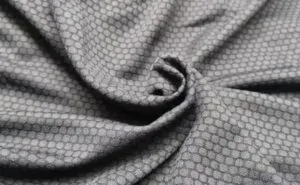
A tech pack, also known as a technical package or spec sheet, is a document that outlines the details and specifications of a product. It is used to communicate design and production information to vendors and manufacturers, and typically includes information such as materials, dimensions, construction details, labeling, and packaging requirements. Tech packs are an important part of the product development process and help ensure that the final product meets the desired design and quality standards. They are commonly used in the fashion and apparel industry, but can also be used in other industries where product design and production are important.
Why are tech packs important?

Security of production and output
Tech packs are important for a number of reasons. First and foremost, they help ensure that the product is developed and produced consistently and to the desired quality standards. By providing clear instructions and guidelines for the entire production process, tech packs serve as a blueprint for the product, helping manufacturers and suppliers understand the design intent and requirements of the product. This can help reduce the risk of errors and miscommunications during production, as everyone involved in the process has a clear understanding of what is expected.
Track progress
Tech packs are also important for managing the product development process and tracking progress. They can be used to set timelines, track samples and prototypes, and identify any issues that need to be addressed. For example, a tech pack might specify that a sample of a new garment should be produced within a certain timeframe, or that certain materials must be sourced by a specific date. By having a clear set of instructions and deadlines in the tech pack, it becomes easier to track the progress of the product development process and identify any potential bottlenecks or delays.
Quality control
Tech packs are also important for quality control purposes. By providing a reference point for evaluating the finished product against the original design specifications, tech packs can help ensure that the product meets the desired quality standards. For example, if the tech pack specifies that a certain type of fabric should be used in a garment, the finished product can be checked against the tech pack to ensure that the correct fabric was used. This can help reduce the risk of defects or issues with the product after it has been produced.
Manage inventory and production
In addition to helping with quality control, tech packs can also be used to help manage inventory and production. For example, if a company has a large number of products in production, it can be difficult to keep track of all the details for each product. By having a tech pack for each product, the company can easily access all the relevant information in one place, making it easier to manage inventory and production.
Overall, tech packs are an essential tool in the fashion and apparel industry for ensuring that products are developed and produced efficiently and to the desired standards. By providing clear and detailed information about the design and production of a product, tech packs help reduce the risk of errors and miscommunications, and help ensure that the finished product meets the desired quality standards. By managing the product development process and tracking progress, tech packs also help make the production process more efficient and effective. So, tech packs are very important in the fashion and apparel industry.
What should a tech pack include?

A tech pack should include the following elements:
Design sketches
This should include detailed illustrations or flat sketches of the front, back, and side views of the product, as well as any other relevant views (e.g. close-ups of details or trims).
Measurements
This should include the dimensions and measurements of the product, such as the width, length, and depth of the product, as well as the measurements of any pockets, buttons, or other details.
Materials
This should include a list of all the materials that will be used in the product, such as the fabric, lining, trims, and any other materials. It should also include information about the weight, width, and other characteristics of the materials.
Construction
This should include detailed information about how the product will be constructed, including the type of seams, hems, and other details. It should also include information about any special techniques or processes that will be used, such as printing, embroidery, or other decorative techniques.
Labeling and packaging
This should include information about the labels and packaging that will be used for the product, such as the type of labels, the placement of labels, and any other packaging requirements.
Quality standards
This should include information about the quality standards that the product must meet, such as any industry-specific standards or regulations that must be followed.
Sizing and fit
This should include information about the sizing of the product, such as the size range that will be offered and the fit of the product (e.g. slim fit, regular fit, etc.).
Care instructions
This should include information about how the product should be cared for, including washing and drying instructions, ironing instructions, and any other special care instructions.
Production timeline
This should include information about the timeline for production, including the expected delivery date and any other important deadlines.
Overall, a tech pack should provide a clear and detailed understanding of the design and production of a product, and should be used as a reference guide by all stakeholders involved in the production process.







